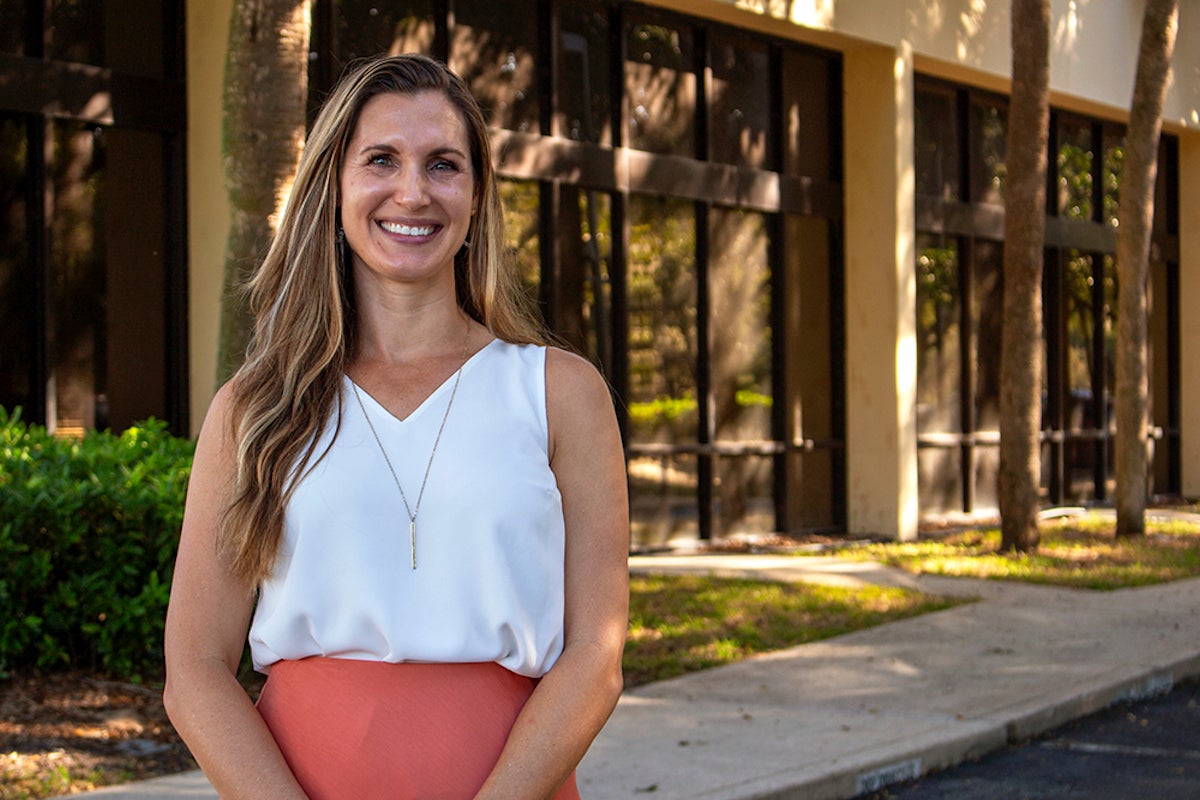Every year, more than 795,000 people in the United States have a stroke, according to the Centers of Disease Control and Prevention. Post-stroke, people face a multitude of health difficulties, among which include acquired apraxia of speech (AOS), a motor speech disorder affecting the ability to plan and program the spatial and temporal movements responsible for fluid speech production. AOS can range in severity from minimal disruption to an inability to produce speech entirely. Nationwide, AOS is the primary communication impairment in an estimated 320,000 people and frequently occurs as a secondary diagnosis in two million people with post-stroke aphasia, a language processing disorder.
With the help of a $570,000 grant from the National Institutes of Health, College of Health Professions and Sciences researcher and Assistant Professor of Communication Sciences and Disorders Lauren Bislick is exploring alternative, cost-effective practice opportunities to help people with post-stroke AOS continue speech rehabilitation beyond treatment usually available in an outpatient, clinical setting.
Those who experience post-stroke AOS traditionally receive one-on-one speech therapy in an in-person session, often two days a week for 50 minutes, to help them regain or improve verbal expression. Research shows stroke survivors with AOS respond positively to this protocol, but an extensive amount of practice is needed to drive lasting change.
However, intensive or ongoing speech therapy isn’t always feasible due to financial, time and insurance restraints. Burdens like the cost of services, travel time to and from clinics, and limited insurance-covered sessions make it difficult for those affected by post-stroke AOS to continue long-term speech therapy. As a result, many people discontinue care and fall short of their communication goals.
“Recovery for patients following a stroke is not like healing a broken arm or leg,” Bislick says. “Different types of therapies are often necessary, and recovery timeframes can be extensive and continue well beyond what insurance allows.”
To address this problem, Bislick and her team will develop and assess a home practice protocol that utilizes motor imagery practices called Motor Imagery for Treatment Enhancement and Efficacy, or MI-TEE. “When I started combing through the literature, I realized there’s a lot of evidence for motor imagery support in training athletes and the rehabilitation of limb-related injuries, but almost nothing has been done in speech rehabilitation,” Bislick says. MI-TEE will serve as an accessible and practical tool that can accompany traditional speech therapy for stroke survivors and others by providing them the tools to further practice their speech skills outside the clinic through an at-home program.
The treatment, individually curated for each patient, will present sounds and images of target words, prompting the patient to imagine speaking each word in their mind. In previous studies, motor imagery practice has shown to help rehabilitation by engaging neural networks that support motor execution – including those involved in speech – priming the brain for the physical act.
The grant will fund the rehabilitation of 18 patients participating in the 8 ½-week program. Nine of these patients will receive a combination of traditional speech therapy, comprising of three weekly 50-minute sessions and MI-TEE for 8 ½ weeks. The remaining nine patients will receive traditional speech therapy for the first five weeks, followed by a combination of traditional speech therapy and MI-TEE for the last 3 ½ weeks.
The research is scheduled to begin Spring 2024.
“The goal of this research is to produce a low-cost, evidence-based speech rehabilitation tool that can bolster treatment in between sessions and beyond and be used by a large portion of the AOS-affected population,” Bislick says. “We want to create something that speech language pathologists in the field are comfortable using, and we want to give people the ability to continue therapy regardless of insurance, time or financial restrictions.”
Bislick’s grant provides funding for three years from the NIH’s National Institute on Deafness and Other Communication Disorders. She is collaborating with Professors Debbie Hahs-Vaugh and Audra Skukauskaite in the College of Community Innovation and Education.
Bislick is the director of the Aphasia and Related Conditions Research Lab and the Aphasia House, a program that delivers multi-week intensive therapy for those affected by aphasia. She is a certified speech language pathologist and brain injury specialist. Bislick was also recently named as the recipient of the 2023 Tavistock Trust for Aphasia Distinguished Scholar Award for her research and service contributions focused on enhancing the quality of life for people with aphasia.




